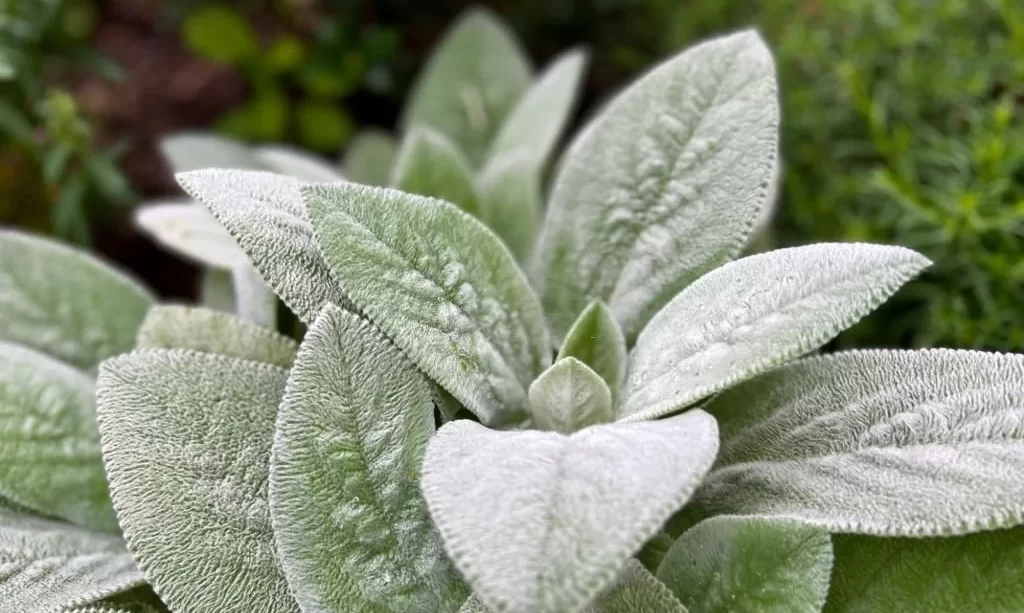Lamb’s ear, with its velvety, silver-green leaves, is a captivating and unique plant that often graces gardens and landscapes. Its soft, fuzzy texture and striking appearance make it a favorite among garden enthusiasts. Yet, as you admire this plant’s beauty, you might wonder whether its appeal extends beyond the visual. In this article, we’ll delve into the world of lamb’s ear, exploring not only its remarkable characteristics but also its edibility and potential culinary uses. Is it safe to eat lamb’s ear, and could it be a hidden gem in the culinary world? Let’s unravel the mystery of this intriguing plant.
- Offering 40+ WOOLLY LAMB’S EAR seeds, packaged in a paper seed envelope.
- Germination and growing instructions are clearly displayed on each package for successful gardening every time.
- Grow plants for food or try gardening as new hobby
- Seeds make great gifts for all ages
What is Lamb’s Ear?
Lamb’s ear, scientifically known as Stachys byzantina, is a perennial herbaceous plant native to Turkey and Iran. It belongs to the mint family (Lamiaceae) and is distinctively characterized by its large, oval-shaped leaves covered in soft, silvery-white hairs. This gives the plant its velvety, lamb’s ear-like texture, which is both tactile and visually appealing.
In the garden, lamb’s ear is primarily grown for its foliage, as the leaves create a striking contrast with other plants. Its low, spreading habit makes it an excellent choice for ground cover, while its drought tolerance and adaptability to various soil types make it a hardy addition to garden landscapes.
While lamb’s ear is primarily cultivated for its ornamental value, some individuals have explored its potential culinary and medicinal uses. It’s essential to examine whether this charming plant is indeed edible and if it offers any culinary delights beyond its aesthetic charm.
Edibility of Lamb’s Ear
Lamb’s ear is generally considered safe for human consumption, but it’s essential to approach it with some caution and awareness. While it may not be a common ingredient in most cuisines, it is not known to be toxic when consumed in small quantities. However, the plant’s culinary use is relatively limited due to its fuzzy texture and mild flavor.
Some people have reported using lamb’s ear leaves in salads or as a garnish for their unique appearance and soft texture. It’s worth noting that the leaves are quite mild in taste, resembling a slightly earthy, herbaceous flavor. Despite its potential edibility, lamb’s ear is not a widely recognized or utilized ingredient in culinary traditions.
Culinary Uses
Lamb’s ear, with its distinctive appearance and mild flavor, has found some culinary applications in creative kitchens. While it may not be a staple, it has been experimented with in various ways, such as:
- Salads: The soft, fuzzy leaves can be used as an attractive and unusual addition to salads, providing a unique texture and visual appeal.
- Garnish: Lamb’s ear leaves can be used as an eye-catching garnish for both sweet and savory dishes, adding a touch of elegance to plates.
- Herbal Infusions: Some individuals have used lamb’s ear leaves to infuse water or tea, infusing a subtle herbaceous note.
- Medicinal Use: In some traditional herbal medicine practices, lamb’s ear has been used for its purported medicinal properties, such as wound healing and soothing properties. However, it’s essential to exercise caution and consult with a qualified herbalist or healthcare professional before using it for medicinal purposes.
While lamb’s ear can add a unique touch to culinary creations, it’s essential to remember that its culinary use is limited and largely based on personal experimentation. If you decide to incorporate lamb’s ear into your culinary endeavors, ensure that you positively identify the plant, wash the leaves thoroughly, and use them sparingly to appreciate their mild flavor and velvety texture. Additionally, if you have any doubts or concerns about the safety or potential allergenicity of lamb’s ear, it’s advisable to consult with a knowledgeable expert before consumption.
Precautions and Considerations
While lamb’s ear is generally safe for consumption in moderation, it’s essential to exercise some precautions and considerations:
- Positive Identification: Always positively identify lamb’s ear (Stachys byzantina) and ensure it’s free from contaminants or pesticides before use. Mistakenly harvesting a similar-looking, toxic plant could have serious consequences.
- Moderation: Use lamb’s ear sparingly in culinary applications. Its mild flavor and unique texture can be appealing, but it’s not a staple ingredient, and large quantities may not enhance the flavor of dishes.
- Allergies: As with any food, some individuals may be allergic to lamb’s ear or have sensitivities to its texture. If you’re trying it for the first time, start with a small amount to gauge any potential reactions.
- Medicinal Use: If you intend to use lamb’s ear for medicinal purposes, consult with a qualified herbalist or healthcare professional. While it has some traditional uses in herbal medicine, it’s crucial to ensure safety and efficacy.
Alternative Uses
Beyond its potential culinary applications, lamb’s ear offers alternative uses:
- Crafting: Lamb’s ear leaves, with their soft texture and unique appearance, have been used in crafting projects such as wreaths, potpourri, and decorative arrangements.
- Medicinal Traditions: In certain traditional herbal medicine practices, lamb’s ear has been employed for its purported healing and soothing properties. However, it’s essential to approach this with caution and expert guidance.
- Gardening: Of course, lamb’s ear remains a beloved choice in gardening and landscaping for its ornamental value. Its soft, silvery leaves add a touch of elegance to garden beds and borders.
Conclusion
In conclusion, lamb’s ear, with its captivating velvety leaves, is generally considered safe for human consumption, albeit not a common culinary ingredient. While it may be used in salads, garnishes, and infusions, its culinary use is more about aesthetics and experimentation than a pronounced flavor contribution.
However, lamb’s ear offers a range of alternative uses, from crafting to traditional herbal medicine practices. When considering its consumption or any medicinal applications, exercise caution, ensure proper identification, and consult with experts when necessary.
Ultimately, whether you’re growing lamb’s ear for its ornamental value or exploring its potential uses in the kitchen or elsewhere, this charming plant adds a unique touch to gardens and creative endeavors alike.





